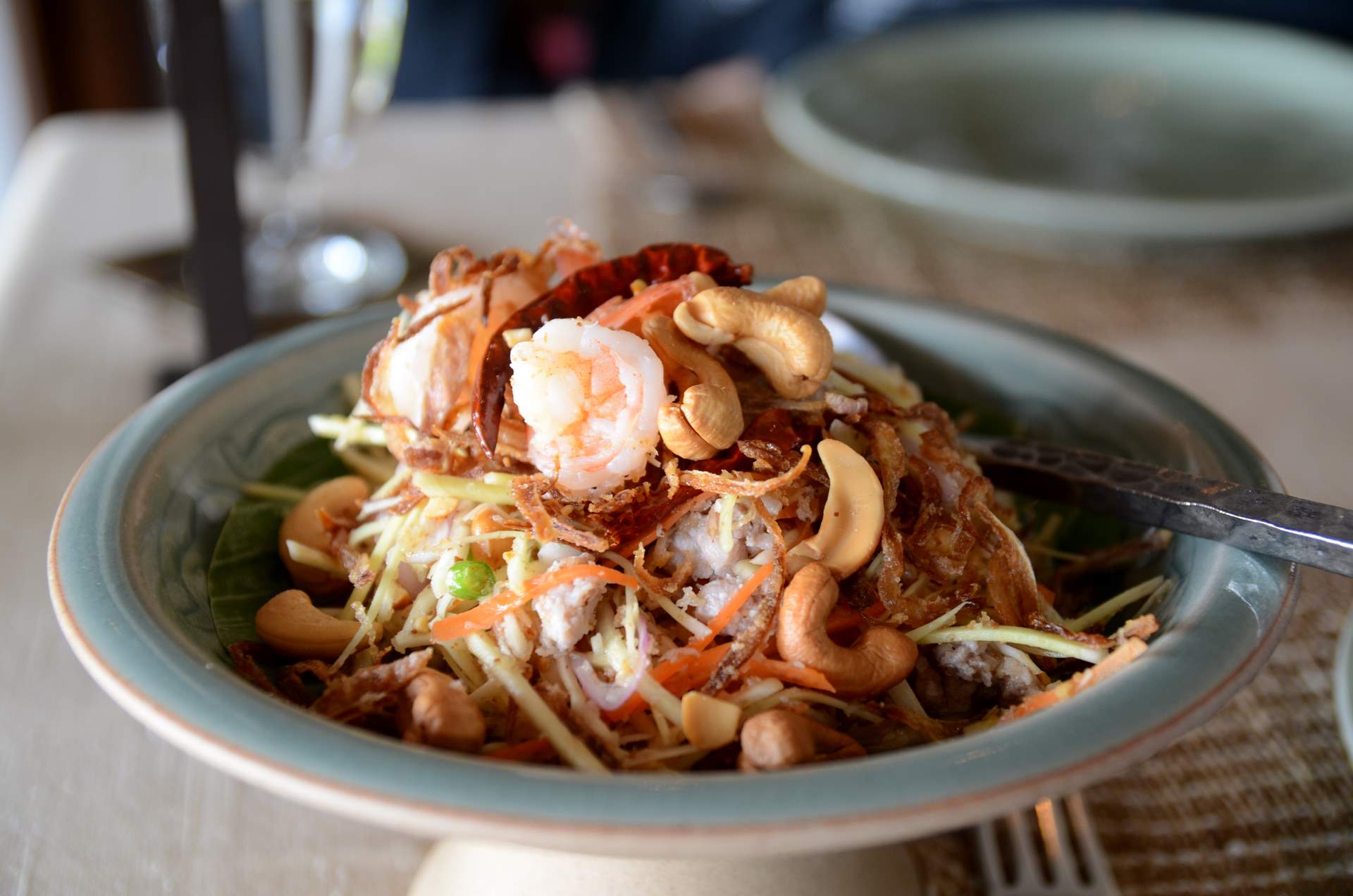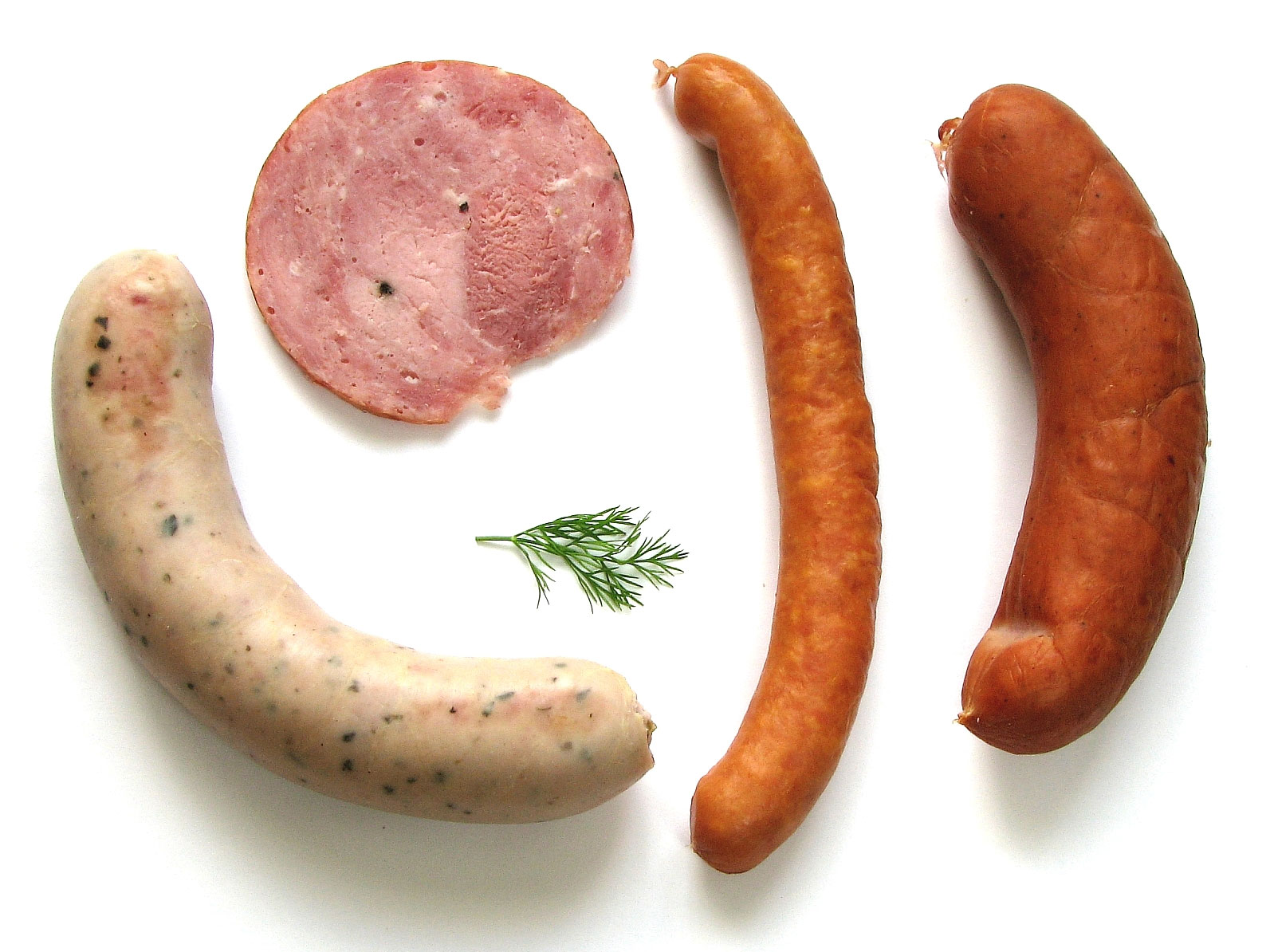|
Naem
''Naem'' ( th, แหนม, , also referred to as ''nham'', ''naem moo'', ''som moo'', ''naem maw'', ''chin som'') is a pork sausage in Laos and Thai. It is a fermented food that has a sour flavor. It has a short shelf life, and is often eaten in raw form after the fermentation process has occurred. It is a popular Southeast Asian food, and different regions of Southeast Asia have various preferred flavors, including variations of sour and spicy. ''Naem'' is used as an ingredient in various dishes and is also served as a side dish. ''Naem'' contains 185 kilocalories per and contains a significant amount of protein, a moderate amount of fat, and minor carbohydrate content. Parasites and enteropathogenic bacteria have been found in samples of ''naem''. Lactic acid formed during its fermentation inhibits the growth of ''Salmonella''. ''Lactobacillus curvatus'' use in the product has been proven to prevent the growth of pathogenic bacteria in ''naem''. It is sometimes irradiated. ... [...More Info...] [...Related Items...] OR: [Wikipedia] [Google] [Baidu] |
Sticky Rice
Glutinous rice (''Oryza sativa var. glutinosa''; also called sticky rice, sweet rice or waxy rice) is a type of rice grown mainly in Southeast and East Asia, and the northeastern regions of South Asia, which has opaque grains, very low amylose content, and is especially sticky when cooked. It is widely consumed across Asia. It is called glutinous ( la, glūtinōsus) in the sense of being glue-like or sticky, and not in the sense of containing gluten (which it does not). While often called ''sticky rice'', it differs from non-glutinous strains of japonica rice which also become sticky to some degree when cooked. There are numerous cultivars of glutinous rice, which include ''japonica'', ''indica'' and ''tropical japonica'' strains. History In China, glutinous rice has been grown for at least 2,000 years. However, researchers believe that glutinous rice distribution appears to have been culturally influenced and closely associated with the early southward migration and distri ... [...More Info...] [...Related Items...] OR: [Wikipedia] [Google] [Baidu] |
Naem Khluk
Naem khao ( lo, ແໜມເຂົ້າ), also known as yam naem ( th, ยำแหนม) is a very popular Lao appetizer salad originating from Tha Deua, a small port village, in Vientiane, Laos. Nam khao can be found at street stalls, restaurants, or served communal/potluck style on large trays at parties and other celebratory events. The dish has spread to Northeastern Thailand (Isan) and the rest of Thailand when Laotians and ethnic Lao from the Isan region migrated to Bangkok for work. The dish is also gaining popularity in the West where the Laotians have immigrated. Other names Naem khao is also known as naem Thadeua ( lo, ແໜມທ່າເດືອ), naem khao tod ( lo, ແໜມເຂົ້າທອດ), yam naem khao thot ( th, ยำแหนมข้าวทอด) or naem khluk ( th, แหนมคลุก) and translated or transliterated as Lao crispy rice salad, Lao fried rice ball salad. Ingredients and preparation Naem khao is made with deep-fried ri ... [...More Info...] [...Related Items...] OR: [Wikipedia] [Google] [Baidu] |
Naem Khao
Naem khao ( lo, ແໜມເຂົ້າ), also known as yam naem ( th, ยำแหนม) is a very popular Lao appetizer salad originating from Tha Deua, a small port village, in Vientiane, Laos. Nam khao can be found at street stalls, restaurants, or served communal/potluck style on large trays at parties and other celebratory events. The dish has spread to Northeastern Thailand (Isan) and the rest of Thailand when Laotians and ethnic Lao from the Isan region migrated to Bangkok for work. The dish is also gaining popularity in the West where the Laotians have immigrated. Other names Naem khao is also known as naem Thadeua ( lo, ແໜມທ່າເດືອ), naem khao tod ( lo, ແໜມເຂົ້າທອດ), yam naem khao thot ( th, ยำแหนมข้าวทอด) or naem khluk ( th, แหนมคลุก) and translated or transliterated as Lao crispy rice salad, Lao fried rice ball salad. Ingredients and preparation Naem khao is made with deep-fried ri ... [...More Info...] [...Related Items...] OR: [Wikipedia] [Google] [Baidu] |
Thai Cuisine
Thai cuisine ( th, อาหารไทย, , ) is the national cuisine of Thailand. Thai cooking places emphasis on lightly prepared dishes with strong aromatic components and a spicy edge. Australian chef David Thompson, an expert on Thai food, observes that unlike many other cuisines, Thai cooking is "about the juggling of disparate elements to create a harmonious finish. Like a complex musical chord it's got to have a smooth surface but it doesn't matter what's happening underneath. Simplicity isn't the dictum here, at all." Traditional Thai cuisine loosely falls into four categories: ''tom'' (boiled dishes), ''yam'' (spicy salads), ''tam'' (pounded foods), and ''kaeng'' (curries). Deep-fries, stir-fries, and steamed dishes derive from Chinese cuisine. In 2017, seven Thai dishes appeared on a list of the "World's 50 Best Foods", an online poll of 35,000 people worldwide by ''CNN Travel''. Thailand had more dishes on the list than any other country: tom yam kung (4th ... [...More Info...] [...Related Items...] OR: [Wikipedia] [Google] [Baidu] |
Thai Salad
Salads that are internationally known as Thai salads with a few exceptions fall into four main preparation methods. In Thai cuisine these are called ''yam, tam, lap'' and ''phla''. A few other dishes can also be regarded as being a salad. Overview Thai salads often do not have raw vegetables or fruit as their main ingredient but use minced meat, seafood, or noodles instead. Similar to salads in the West, these dishes often have a souring agent, usually lime juice, and feature the addition of fresh herbs and other greens in their preparation. Thai salads are not served as entrées but are normally eaten as one of the main dishes in a Thai buffet-style meal, together with rice (depending on the region, this can be glutinous rice or non-glutinous rice) or the Thai rice noodle called '' khanom chin''. Specialised ''khao tom kui'' (plain rice congee) restaurants also serve a wide variety of Thai salads of the ''yam'' type as side dishes. Many Thai salads, for instance, the famous '' ... [...More Info...] [...Related Items...] OR: [Wikipedia] [Google] [Baidu] |
Sausage
A sausage is a type of meat product usually made from ground meat—often pork, beef, or poultry—along with salt, spices and other flavourings. Other ingredients, such as grains or breadcrumbs may be included as fillers or extenders. When used as an adjective, the word ''sausage'' can refer to the loose sausage meat, which can be formed into patties or stuffed into a skin. When referred to as "a sausage", the product is usually cylindrical and encased in a skin. Typically, a sausage is formed in a casing traditionally made from intestine, but sometimes from synthetic materials. Sausages that are sold raw are cooked in many ways, including pan-frying, broiling and barbecuing. Some sausages are cooked during processing, and the casing may then be removed. Sausage-making is a traditional food preservation technique. Sausages may be preserved by curing, drying (often in association with fermentation or culturing, which can contribute to preservation), smoking, or ... [...More Info...] [...Related Items...] OR: [Wikipedia] [Google] [Baidu] |
Spring Onion
Scallions (also known as spring onions or green onions) are vegetables derived from various species in the genus ''Allium''. Scallions generally have a milder taste than most onions and their close relatives include garlic, shallot, leek, chive, and Chinese onions. Although the bulbs of many ''Allium'' species are used as food, the defining characteristic of scallion species is that they lack a fully developed bulb. Instead the ''Allium'' species referred to as scallions make use of the hollow, tubular green leaves growing directly from the bulb. These leaves are used as a vegetable and can be eaten either raw or cooked. Often the leaves are chopped into other dishes and used as garnishes. Etymology and names The words ''scallion'' and ''shallot'' are related and can be traced back to the Ancient Greek () as described by the Greek writer Theophrastus. This name, in turn, is believed to originate from the name of the ancient Canaanite city of Ashkelon. Various other names ... [...More Info...] [...Related Items...] OR: [Wikipedia] [Google] [Baidu] |
Condiment
A condiment is a preparation that is added to food, typically after cooking, to impart a specific flavor, to enhance the flavor, or to complement the dish. A table condiment or table sauce is more specifically a condiment that is served separately from the food and is added to taste by the diner. Condiments are sometimes added prior to serving, for example, in a sandwich made with ketchup, mustard or mayonnaise. Some condiments are used during cooking to add flavor or texture: barbecue sauce, compound butter, teriyaki sauce, soy sauce, Marmite and sour cream are examples. Many condiments, such as mustard or ketchup, are available in single-serving packets, commonly when supplied with take-out or fast food meals. Definition The exact definition of a condiment varies. Some definitions encompass spices and herbs, including salt and pepper, using the term interchangeably with '' seasoning''. Others restrict the definition to include only "prepared food compound cont ... [...More Info...] [...Related Items...] OR: [Wikipedia] [Google] [Baidu] |
Fermented Meat
Fermented meat is an important preservation process which has evolved for meat but is rarely used alone. A particularly common form of fermented meat product is the sausage, with notable examples including chorizo, salami, sucuk, pepperoni, nem chua, som moo, and saucisson. The process of fermentation may be used to render edible meat that would otherwise be poisonous to humans, as in the case of the Icelandic dish hákarl, the fermented meat of the Greenland shark. In 2015, the International Agency for Research on Cancer of the World Health Organization classified processed meat, that is, meat that has undergone salting, curing, fermenting, or smoking, as " carcinogenic to humans". See also * Fermentation in food processing In food processing, fermentation is the conversion of carbohydrates to alcohol or organic acids using microorganisms— yeasts or bacteria—under anaerobic (oxygen-free) conditions. Fermentation usually implies that the action of microorga ... [...More Info...] [...Related Items...] OR: [Wikipedia] [Google] [Baidu] |
Ginger
Ginger (''Zingiber officinale'') is a flowering plant whose rhizome, ginger root or ginger, is widely used as a spice and a folk medicine. It is a herbaceous perennial which grows annual pseudostems (false stems made of the rolled bases of leaves) about one meter tall bearing narrow leaf blades. The inflorescences bear flowers having pale yellow petals with purple edges, and arise directly from the rhizome on separate shoots. Ginger is in the family Zingiberaceae, which also includes turmeric (''Curcuma longa''), cardamom (''Elettaria cardamomum''), and galangal. Ginger originated in Maritime Southeast Asia and was likely domesticated first by the Austronesian peoples. It was transported with them throughout the Indo-Pacific during the Austronesian expansion ( BP), reaching as far as Hawaii. Ginger is one of the first spices to have been exported from Asia, arriving in Europe with the spice trade, and was used by ancient Greeks and Romans. The distantly related di ... [...More Info...] [...Related Items...] OR: [Wikipedia] [Google] [Baidu] |
Shallot
The shallot is a botanical variety (a cultivar) of the onion. Until 2010, the (French red) shallot was classified as a separate species, ''Allium ascalonicum''. The taxon was synonymized with '' Allium cepa'' (the common onion) in 2010, as the difference was too small to justify a separate species. As part of the onion genus ''Allium'', its close relatives include garlic, scallions, leeks, chives, and the Chinese onion. Names The name "shallot" comes from Ashkelon, an ancient Canaanite city, where Classical-era Greeks believed shallots originated. The term ''shallot'' is usually applied to the French red shallot (''Allium cepa'' var. ''aggregatum'', or the ''A. cepa'' Aggregatum Group). It is also used for the Persian shallot or ''musir'' (''A. stipitatum'') from the Zagros Mountains in Iran and Iraq, and the French gray shallot (''Allium oschaninii'') which is also known as ''griselle'' or "true shallot"; it grows wild from Central to Southwest Asia. The name ''sha ... [...More Info...] [...Related Items...] OR: [Wikipedia] [Google] [Baidu] |
.jpg)




